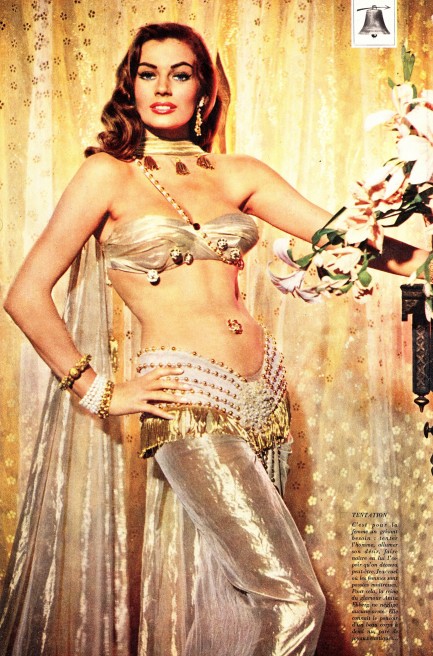| Femmes Fatales | Jun 7 2024 |


Above: a really nice promo image of Chinese actress and nightclub performer Mitsouko, first published in the French magazine Cinémonde today in 1967. Mitsouko's real name was Maryse Guy, but under her pseudonym she appeared in ten films, including Agent 077 - Mission Bloody Mary and—briefly—Thunderball. She made a number of interesting promo images, so she'll probably show up here again.
| Femmes Fatales | Jul 27 2021 |


| Intl. Notebook | Apr 17 2020 |

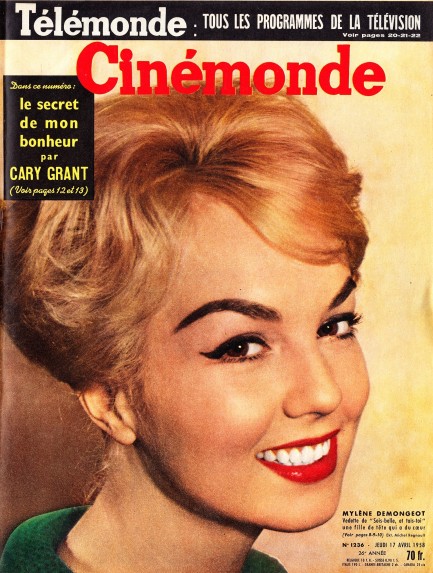
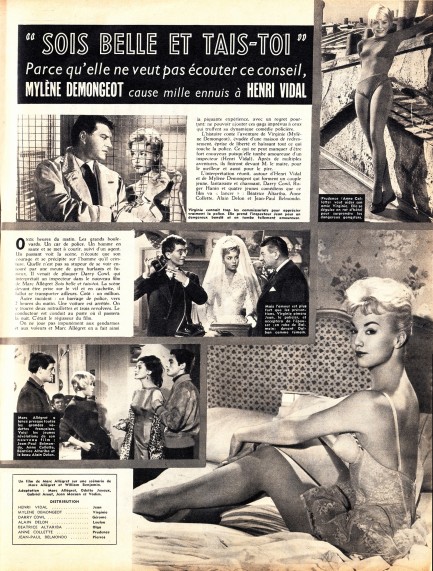
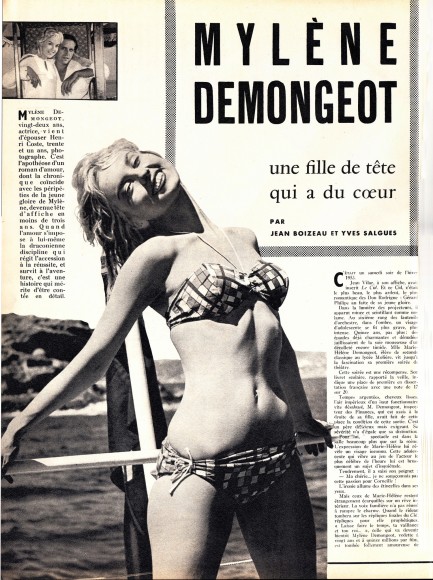
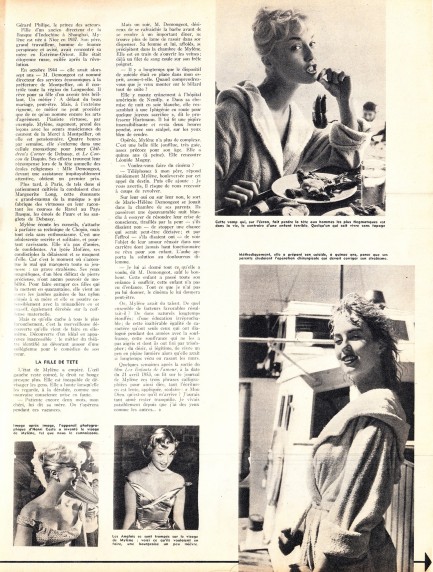
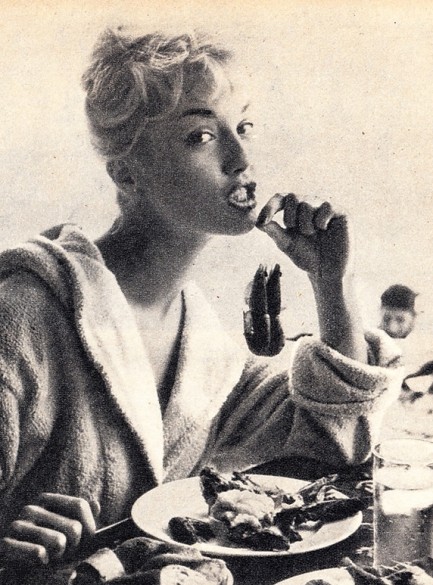
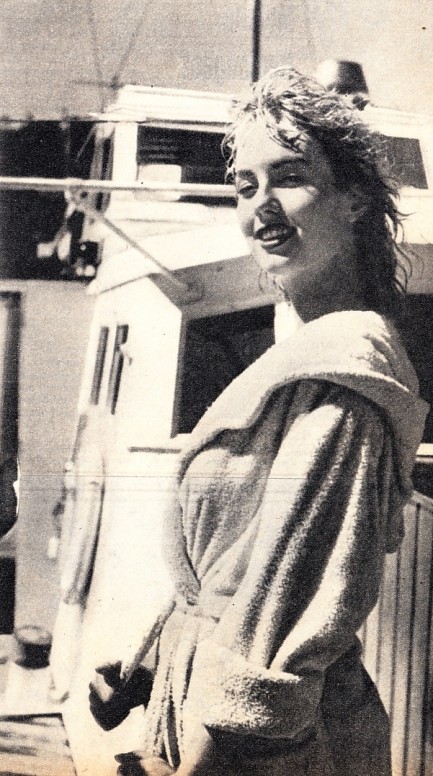
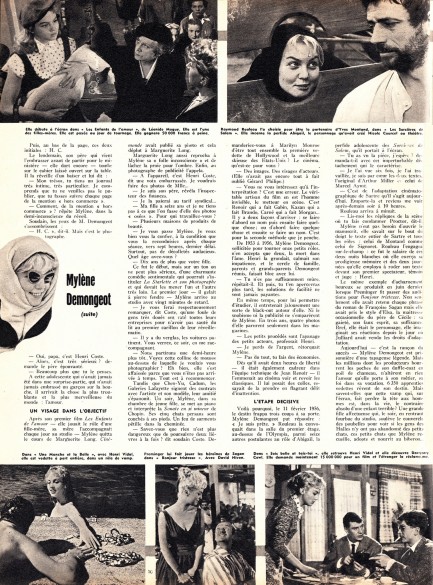
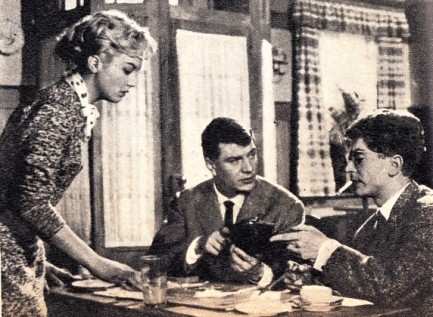
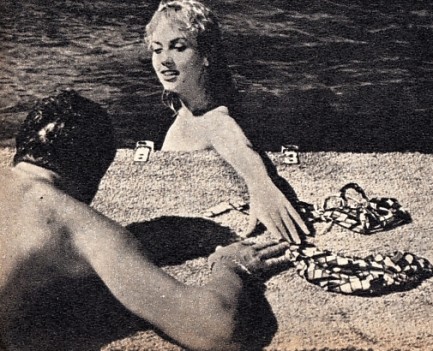
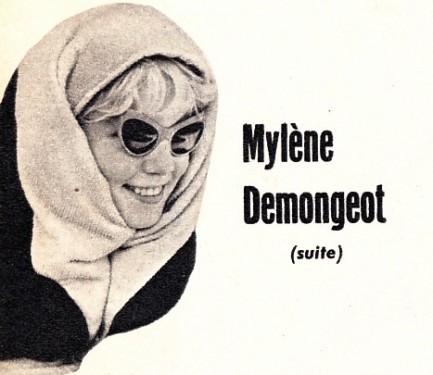
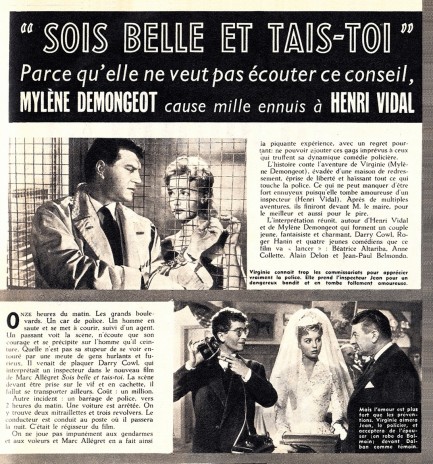
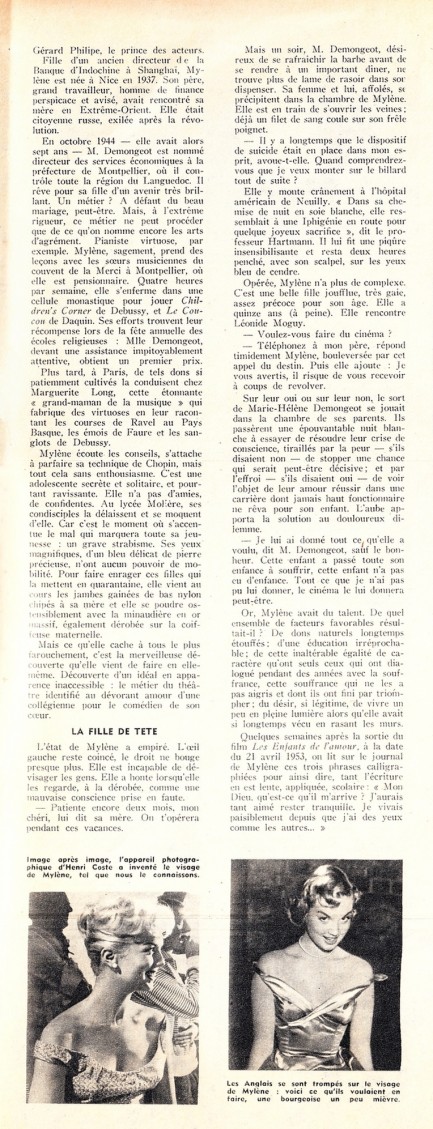
| Hollywoodland | Jul 5 2019 |

Below, another treasure from our France trip. Cinémonde magazine published today in 1960 with Elke Sommer in a summery cover shot and interior photos of Marie-José Nat, Roger Dumas, Deborah Kerr, Jeanne Moreau, and more.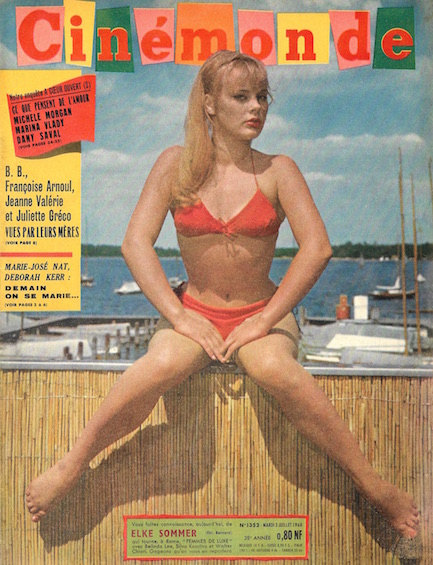
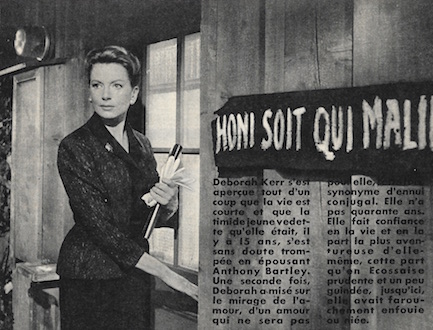
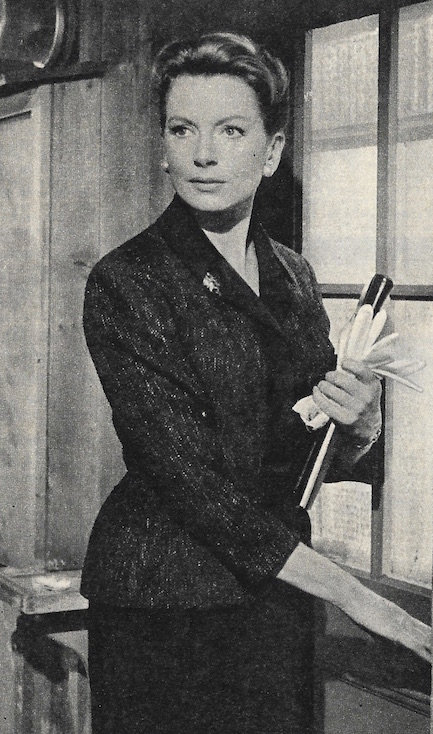
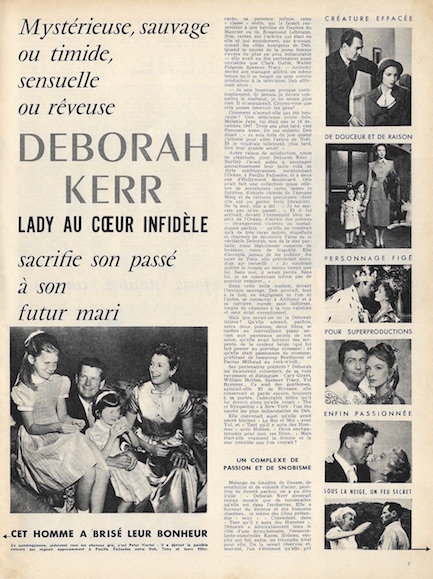

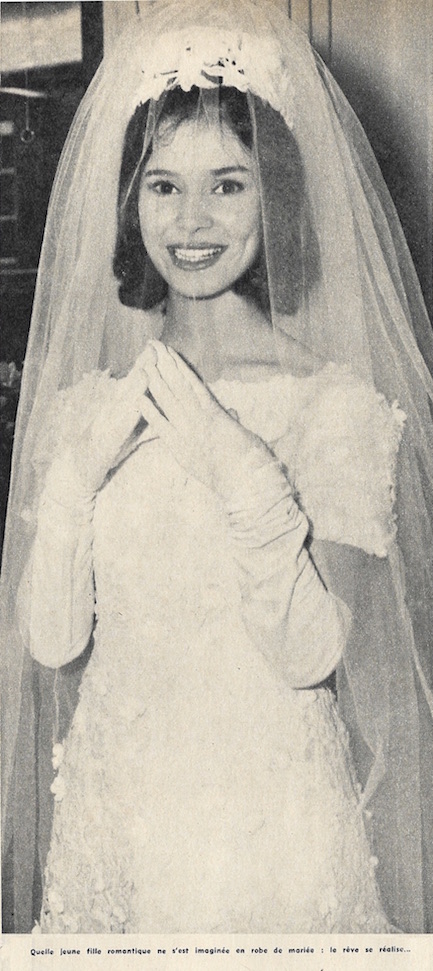
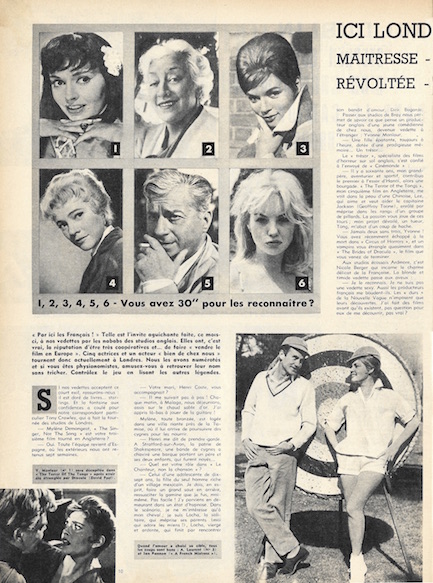
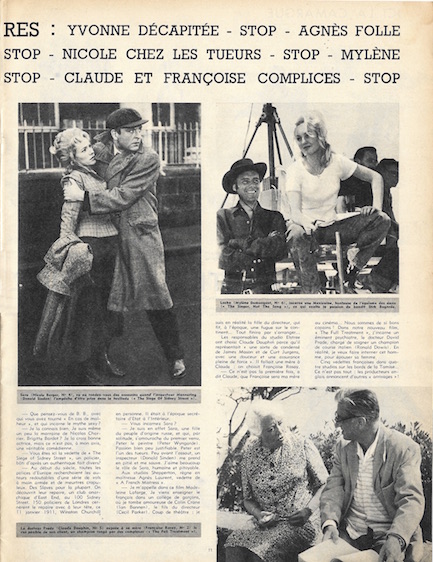
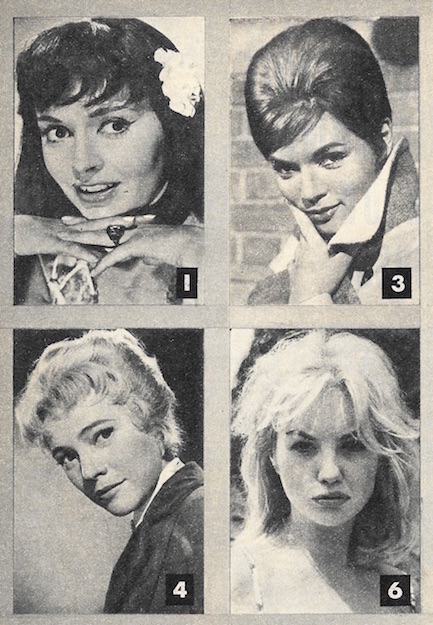
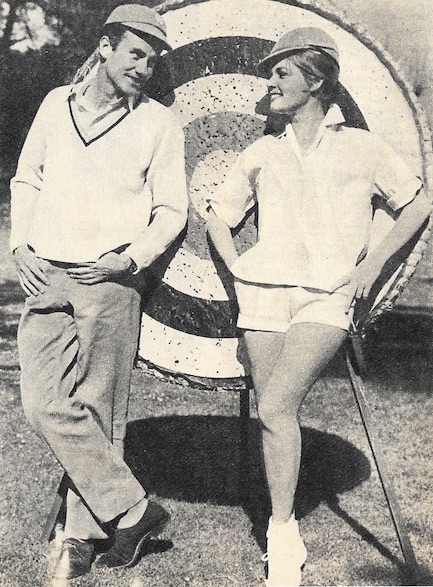
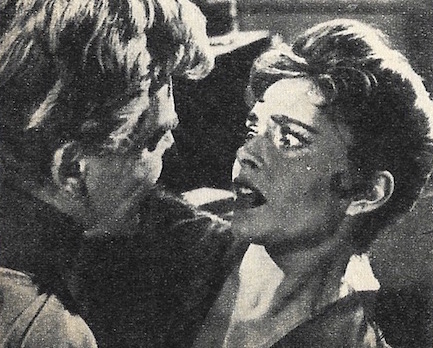
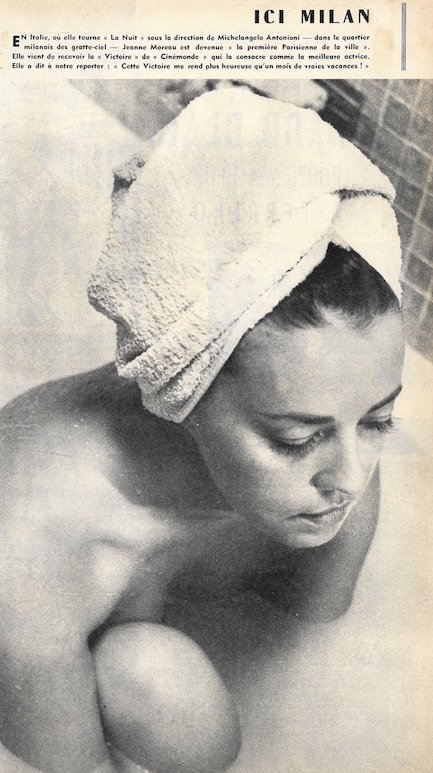
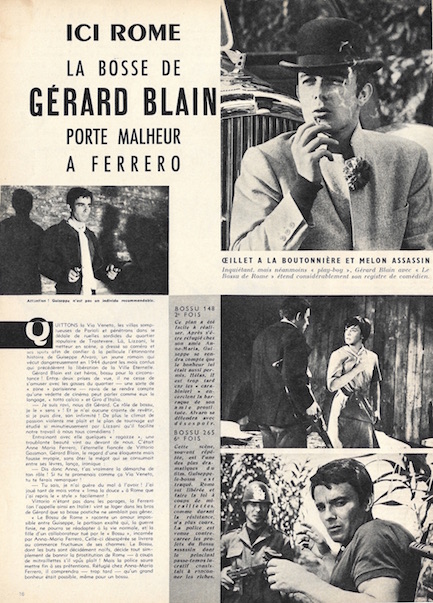
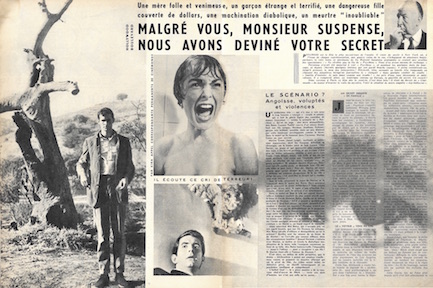
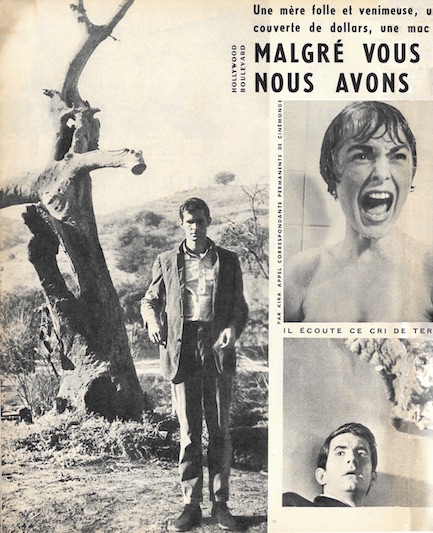
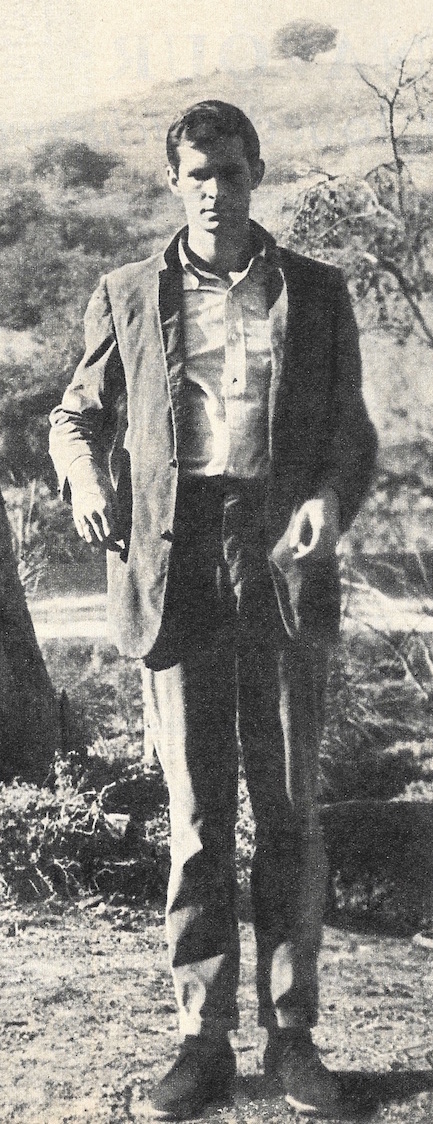
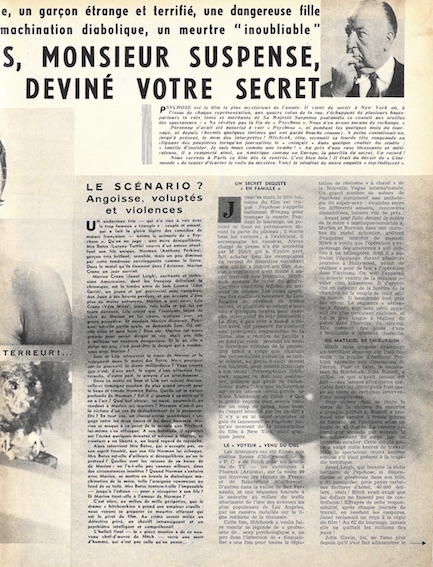
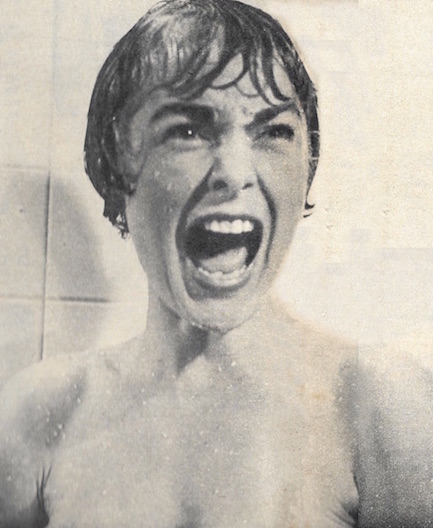
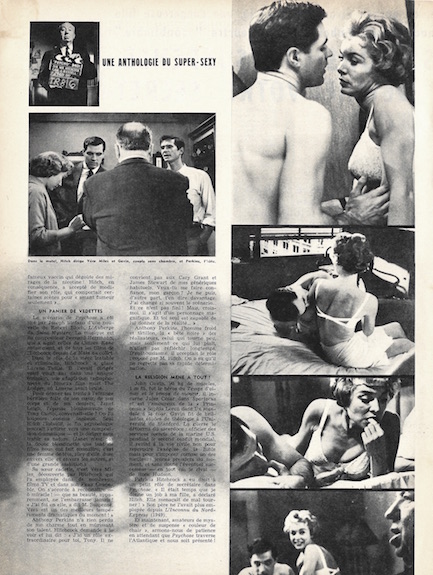
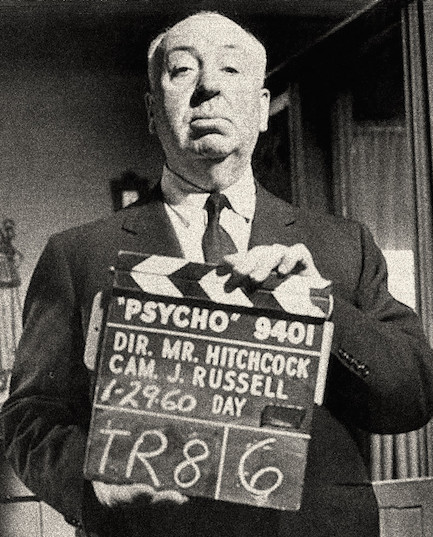

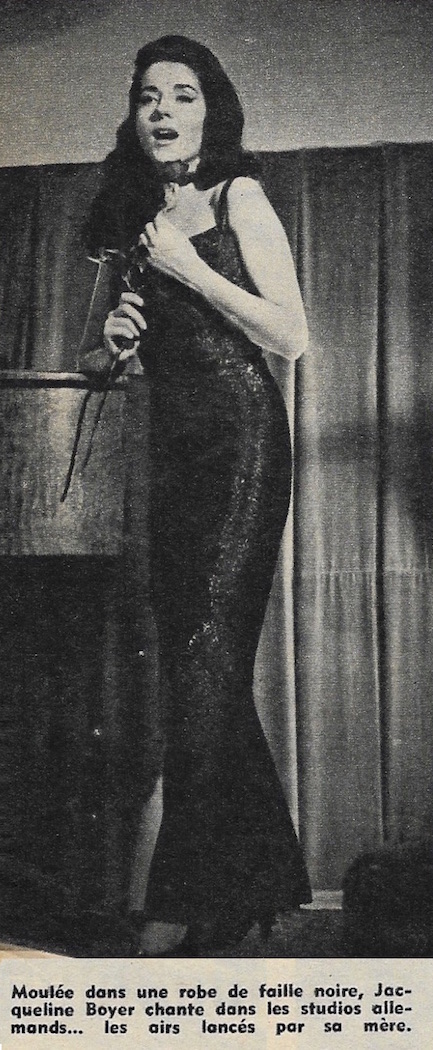
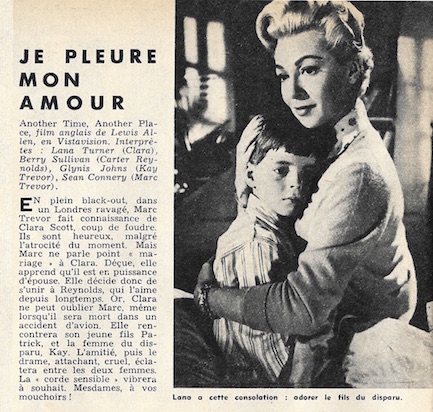
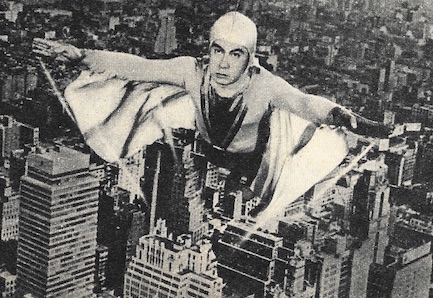
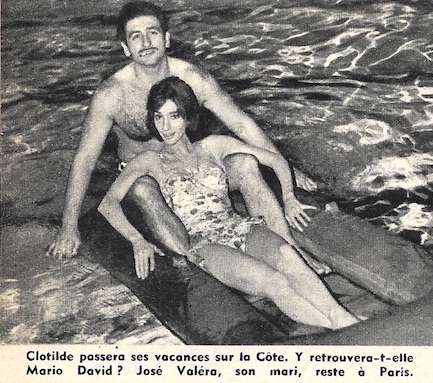
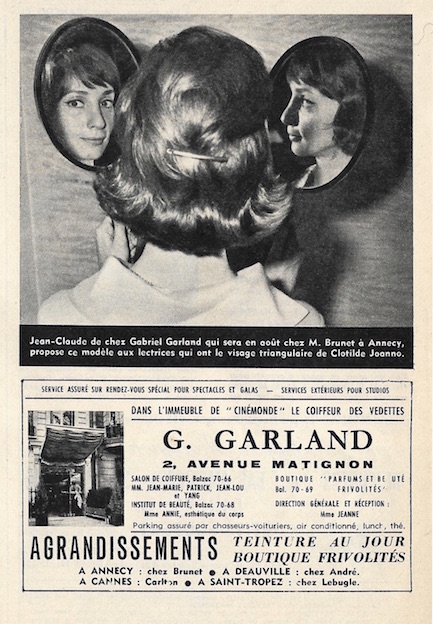
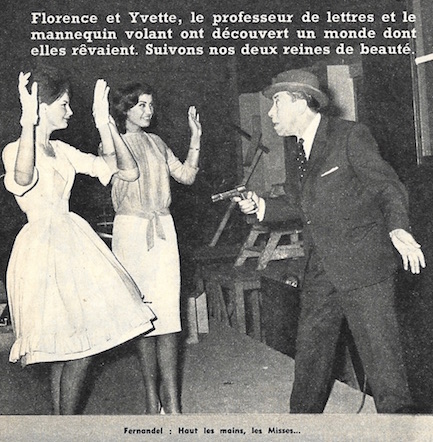
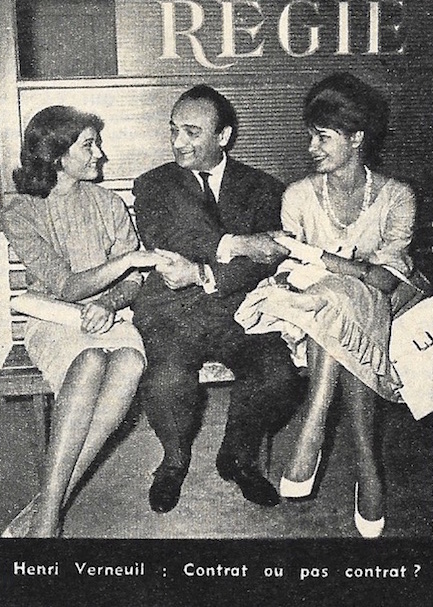
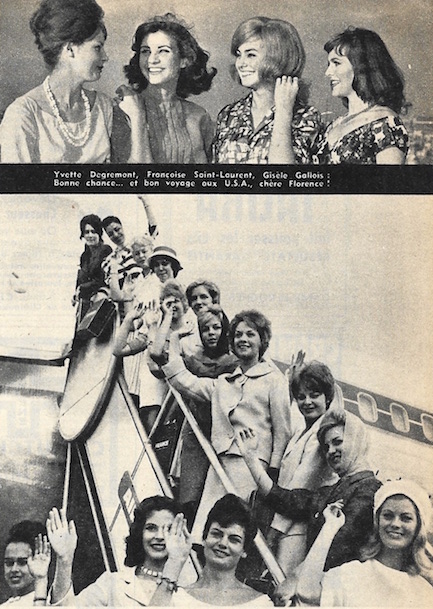
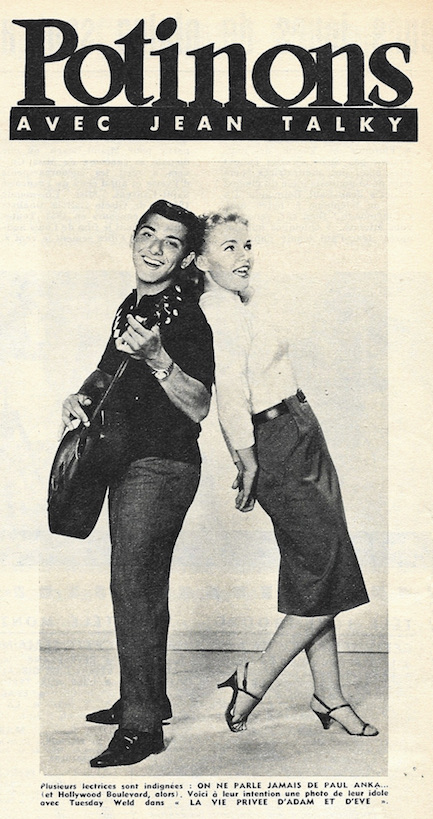
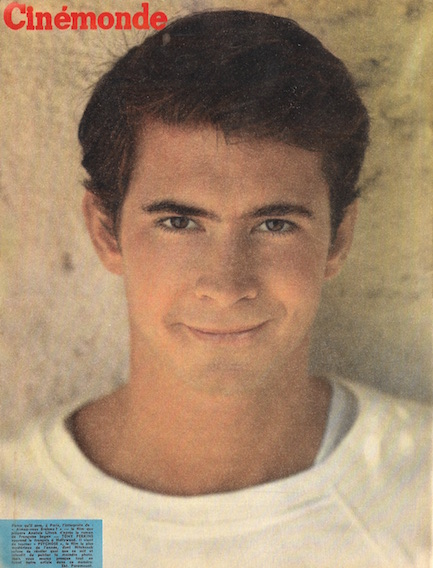
| Intl. Notebook | Apr 6 2019 |

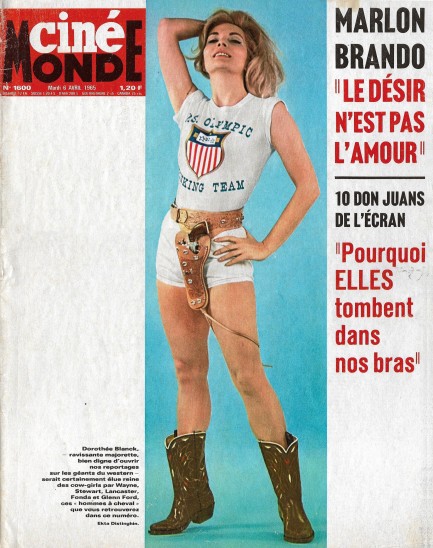
That's the first half of the issue. Afterward editors move outside the western milieu, and you get Marlon Brando, David Niven, Francois Dorléac, Barbara Bouchet, Serge Gainsbourg, hair secrets of the stars, the top ten Don Juans of French cinema, and more. Do we have other issues of this magazine? You bet. We own a group that includes Cinémonde, Ciné-Revue, and others. Will we ever scan them? Well, we make no promises at this point, but you never know—maybe we'll splash out for a bigger scanner and solve the problem with money instead of effort. Seems to work for everyone else. Thirty plus images below.
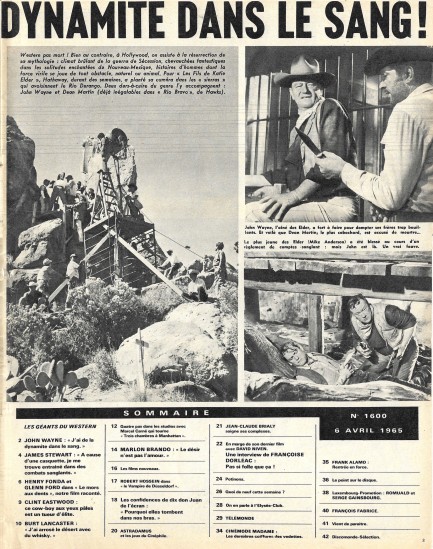
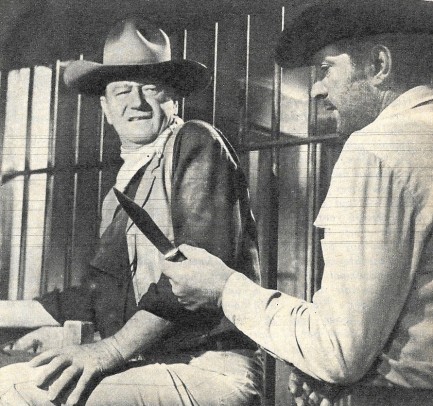
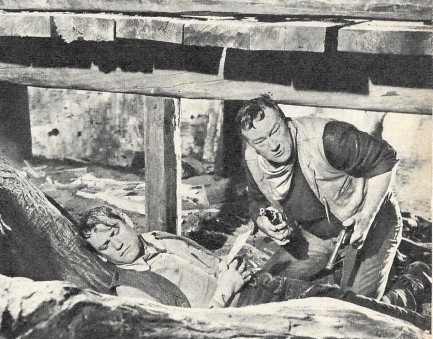
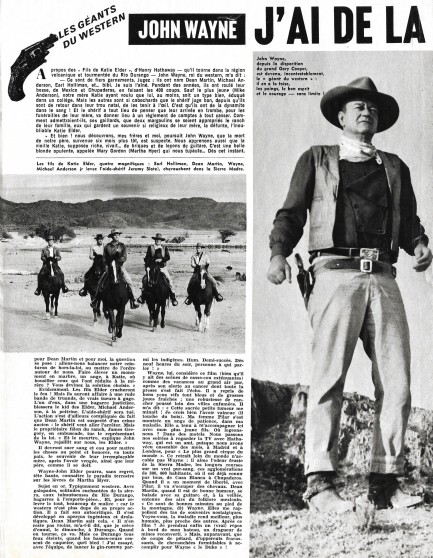
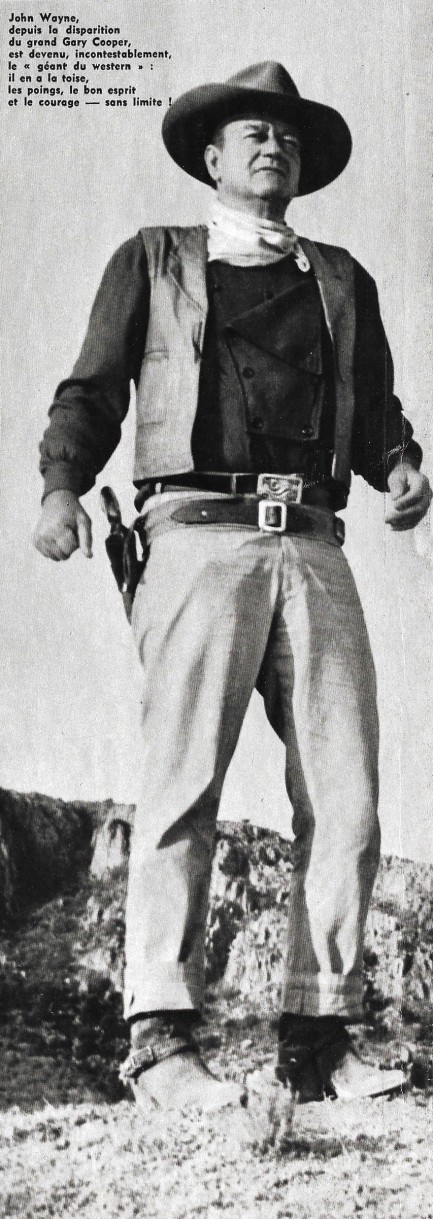
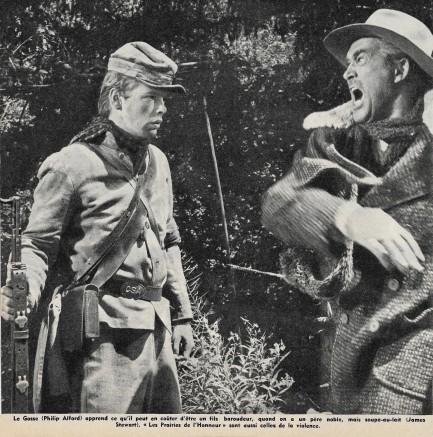
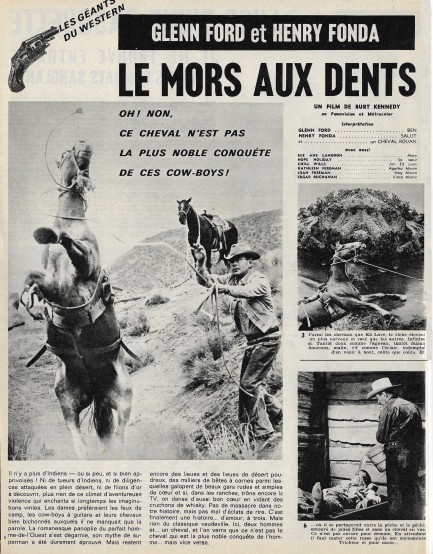
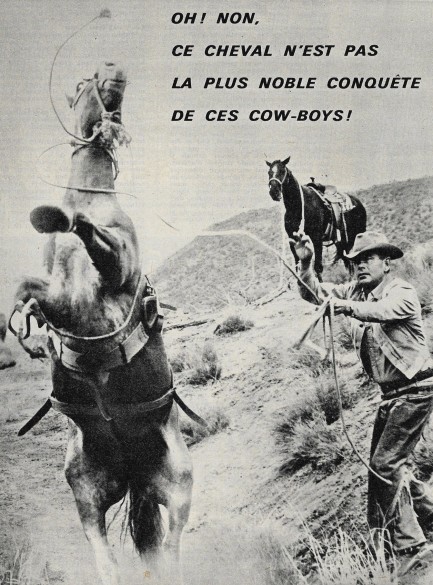
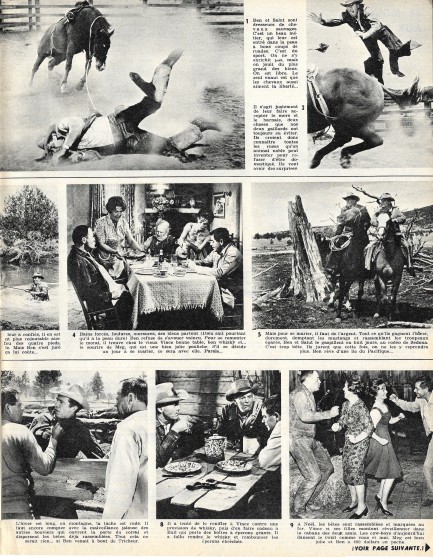
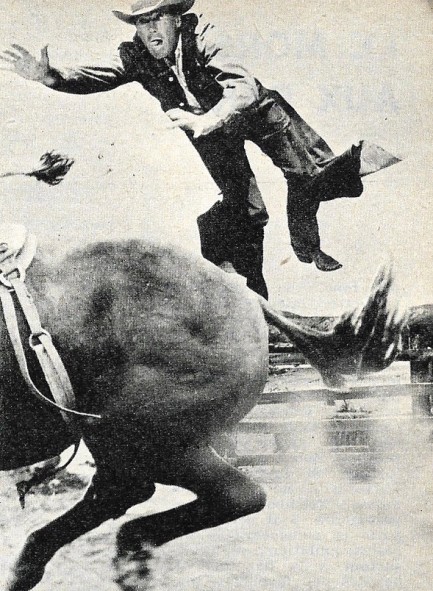
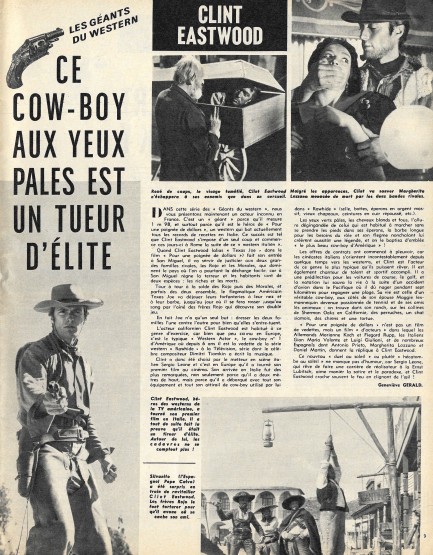
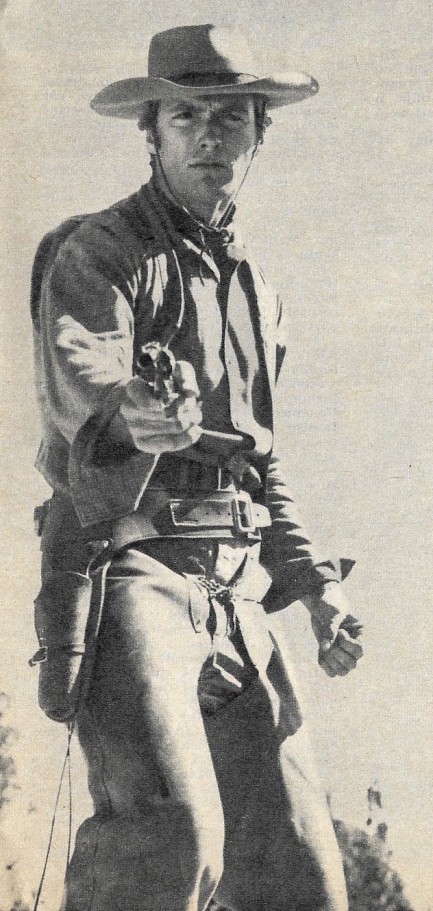
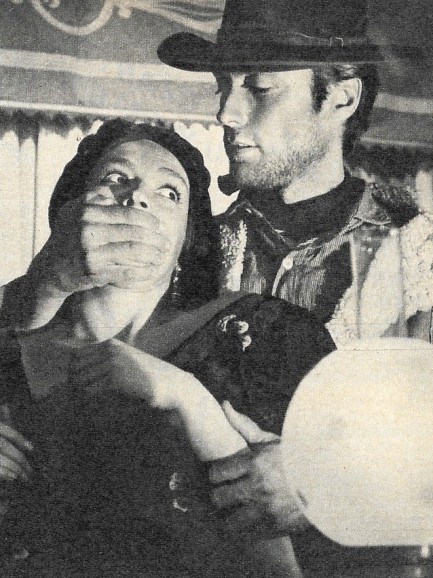
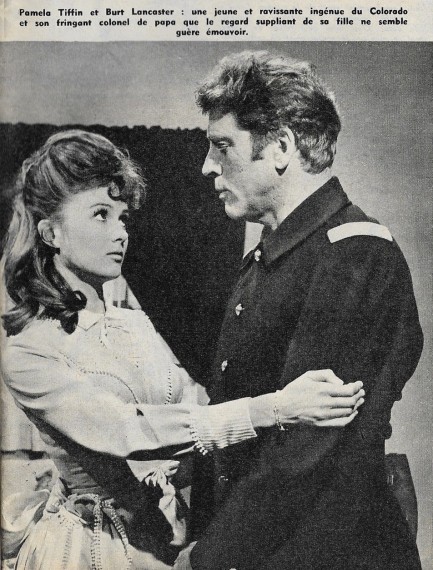
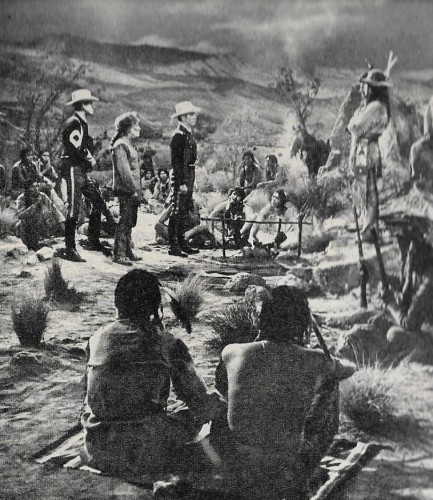
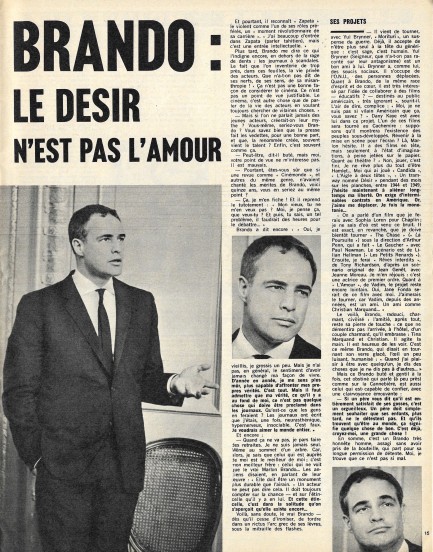
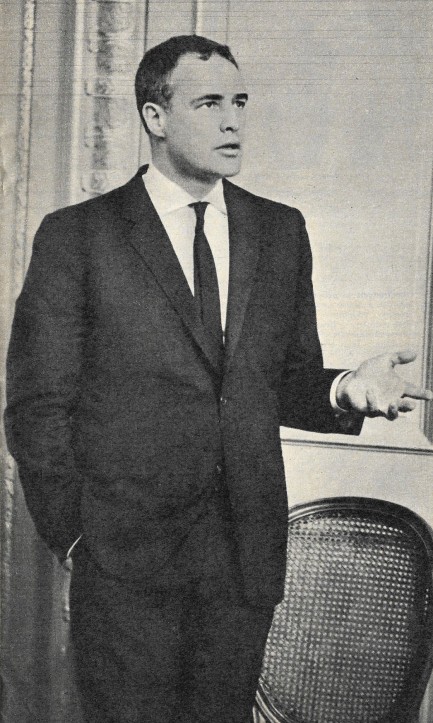
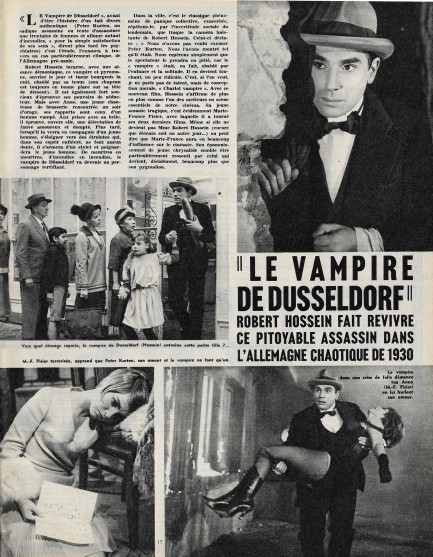
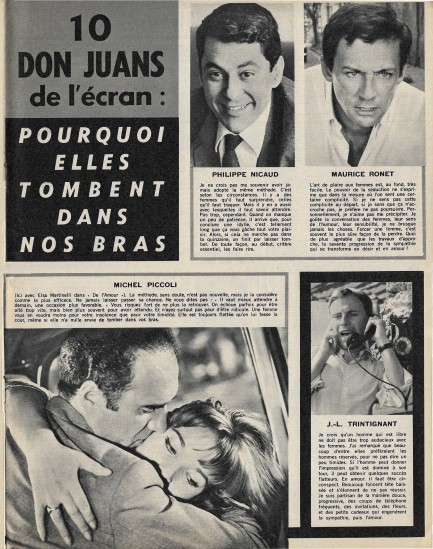
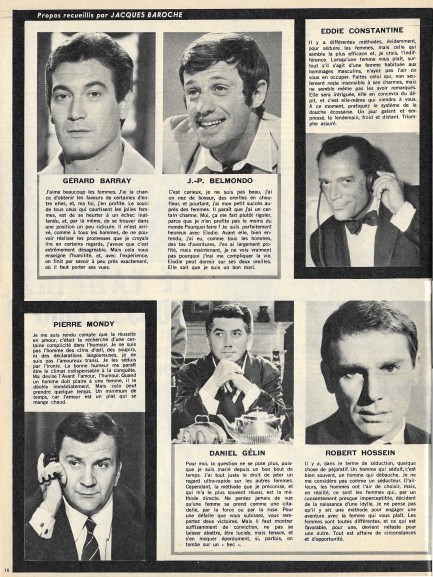
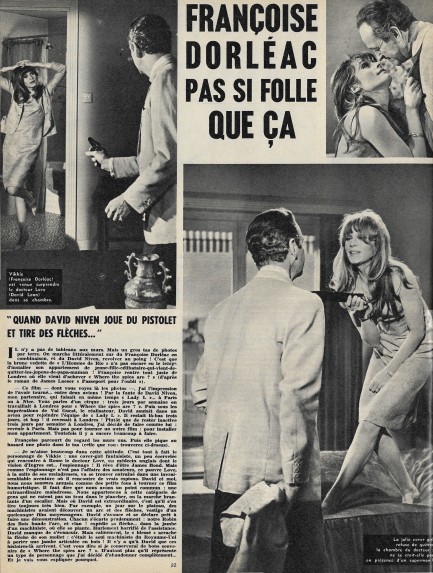
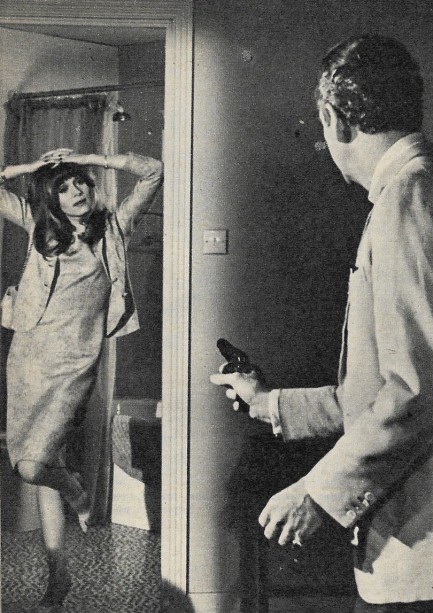
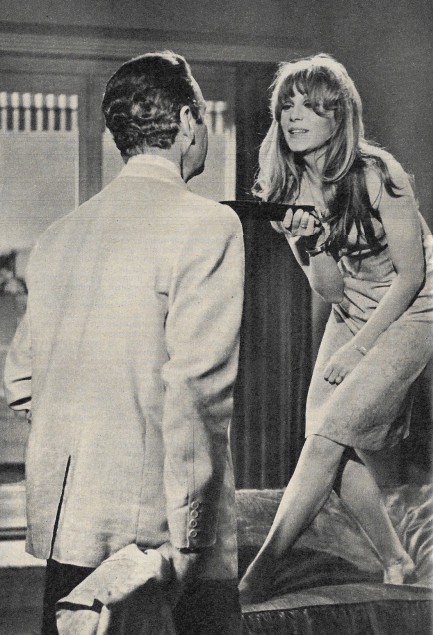
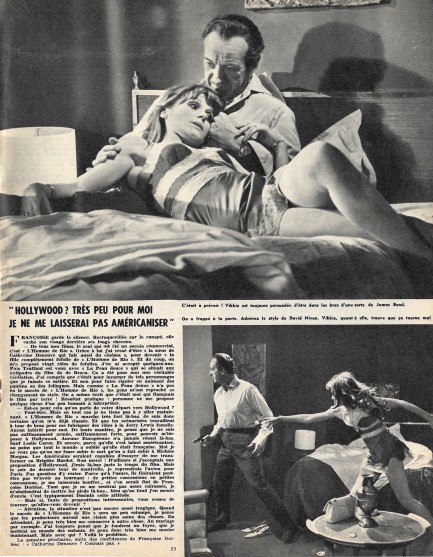
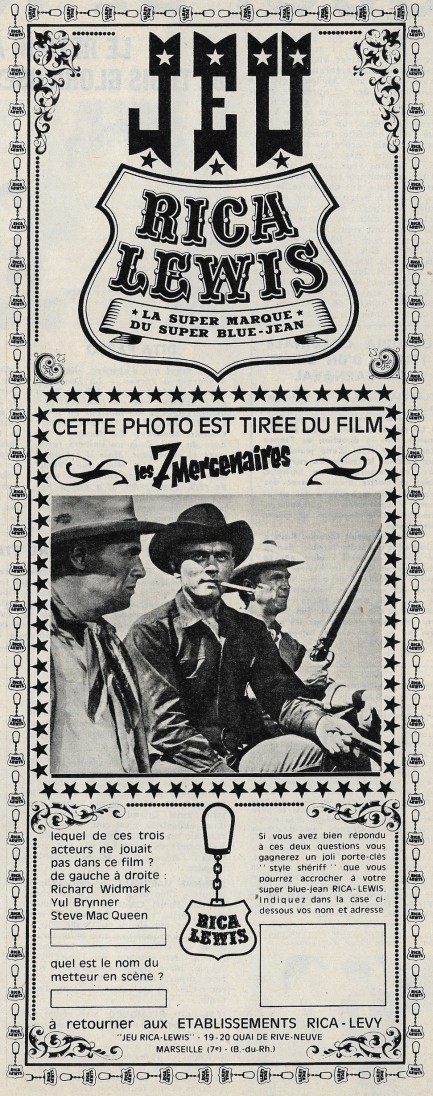
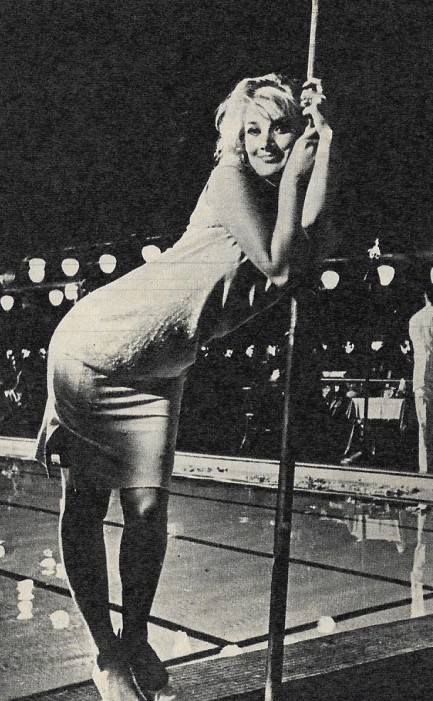
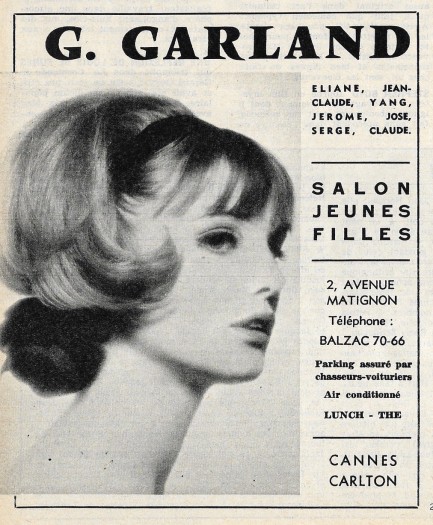
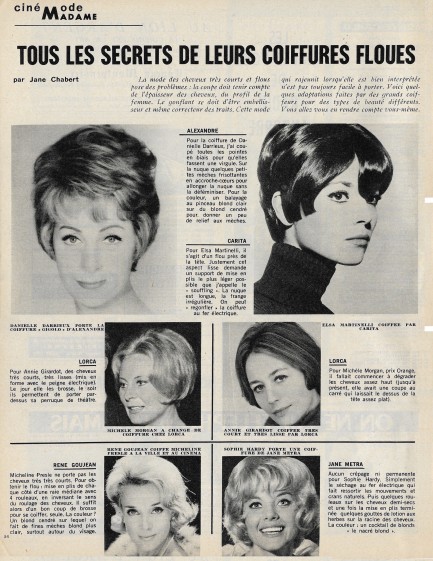
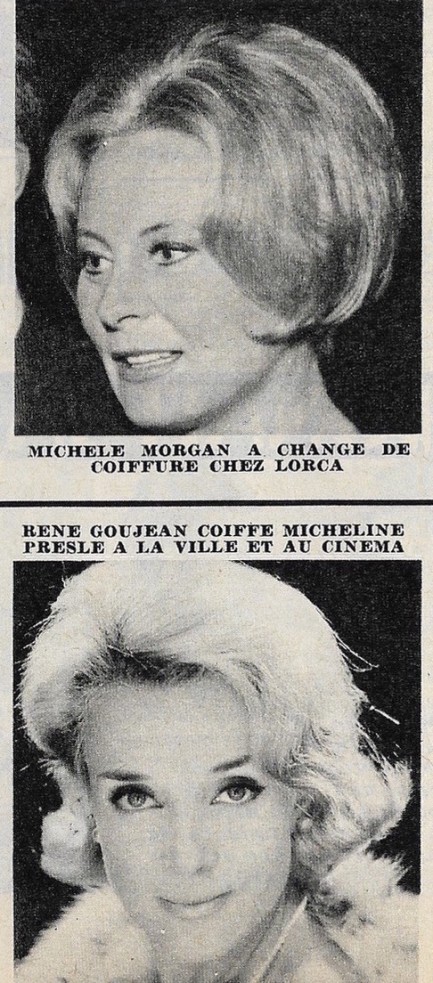
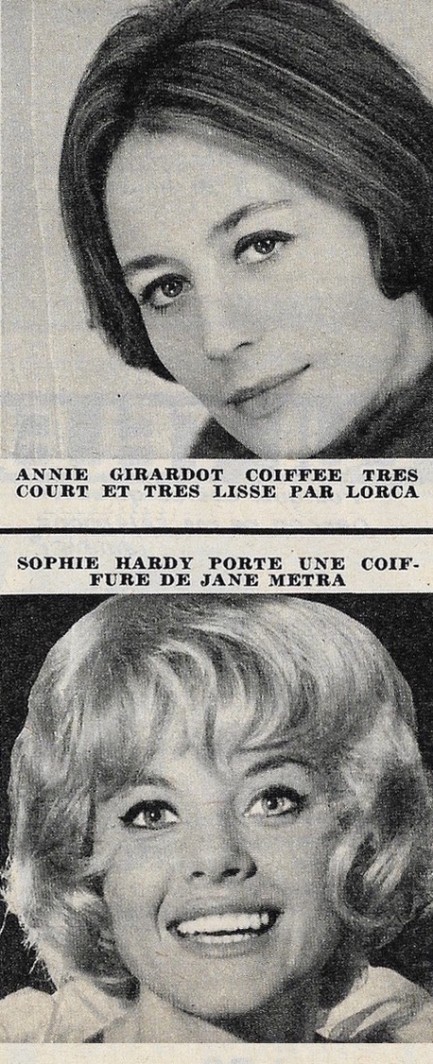
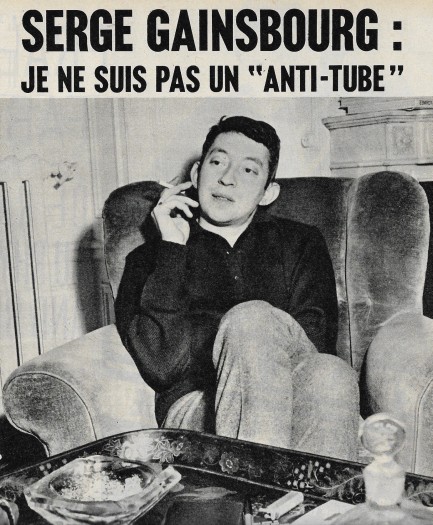
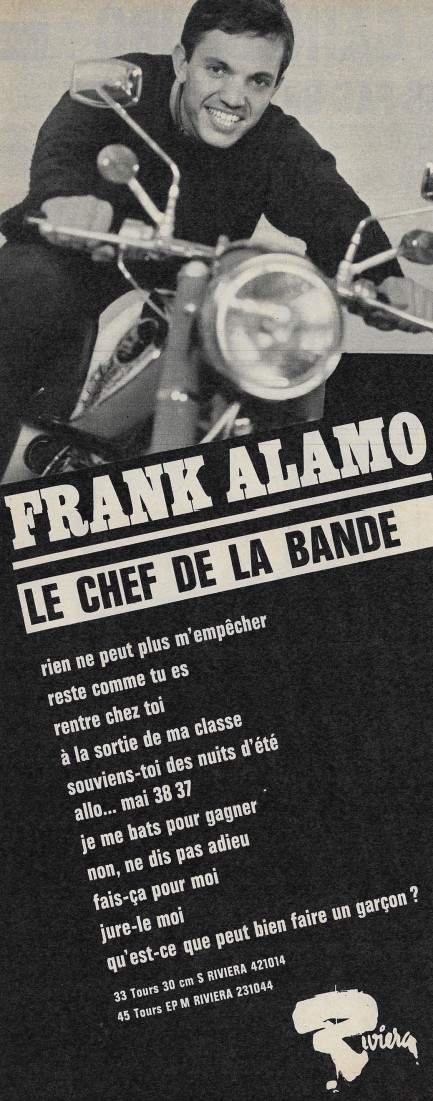
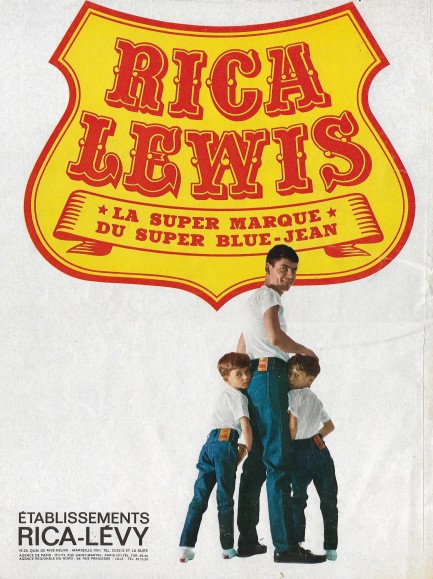
| Intl. Notebook | May 26 2016 |

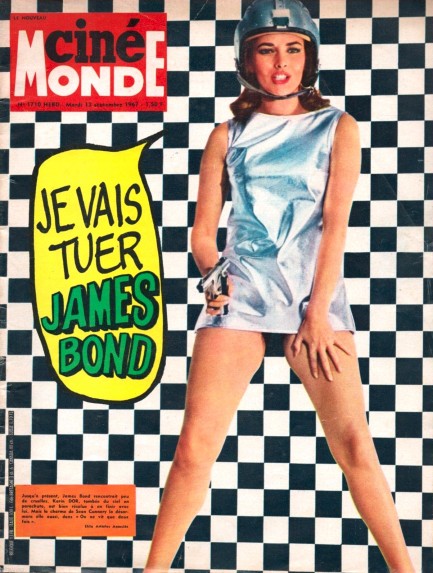
Does this image of Karin Dor look familiar? Possibly because it’s the same one we used in a femme fatale post on her late last year. It was made to promote the film You Only Live Twice, and appeared in many places, here for example on the cover of the French magazine Cinémonde. Focusing pretty much exclusively on movies and movie stars, Cinémonde launched in 1928 and lasted until 1971, with seven years of dormancy from 1940 to 1946, and another two in 1969 and 1970. The examples you see here are all from the mid- to late-1960s, when director Maurice Bessy moved toward less conservative graphics than in the past. Generally Cinémonde cover stars were women, often French, but every once in a while a guy made the cut, such as the fronts with Marlon Brando and Gérard Philipe below. We’ll get to the interiors of Cinémonde a bit later.
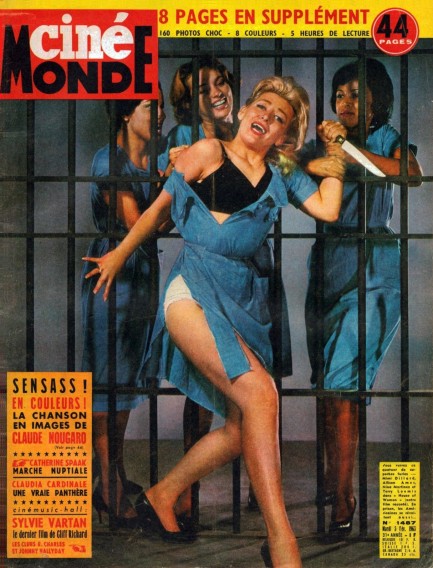

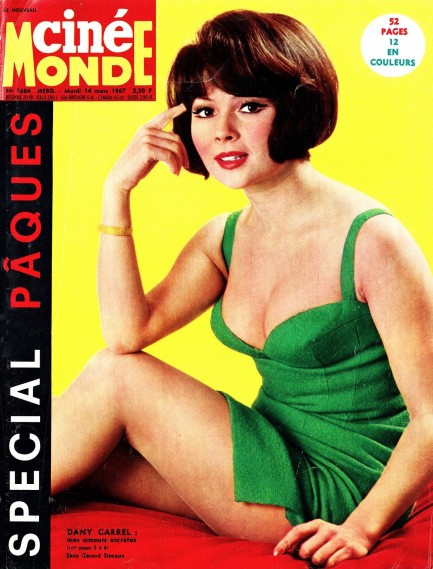
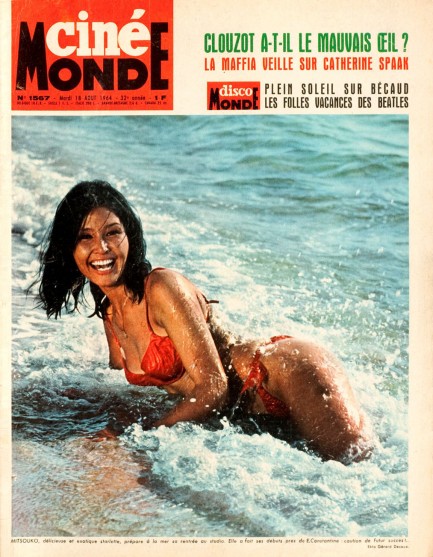
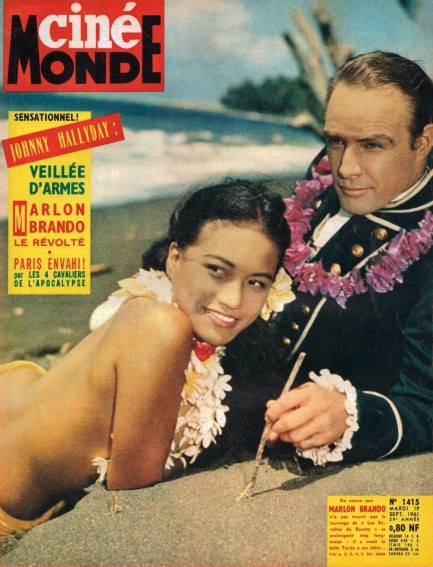
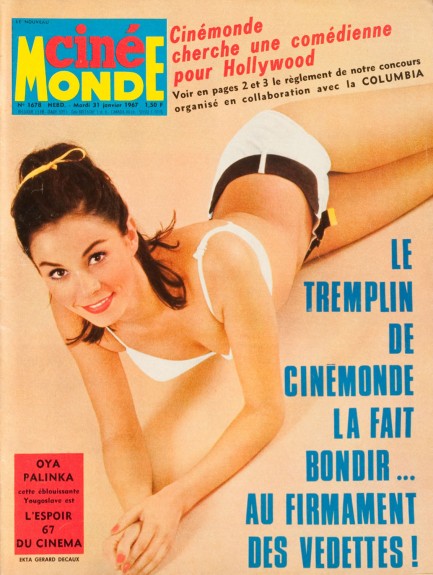
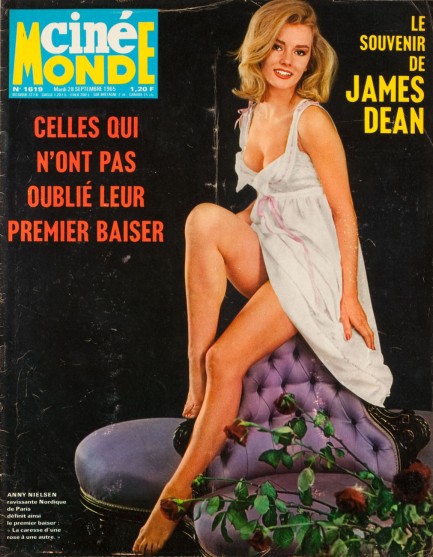
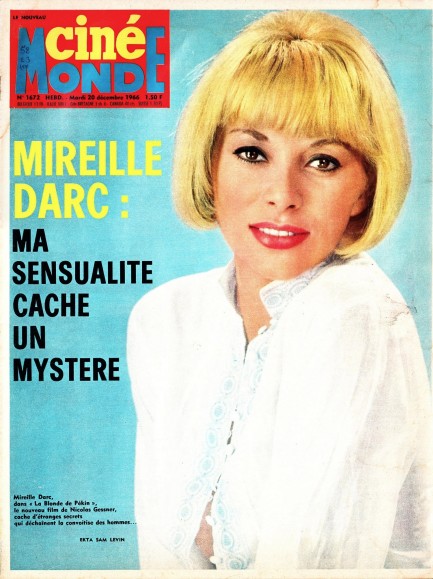

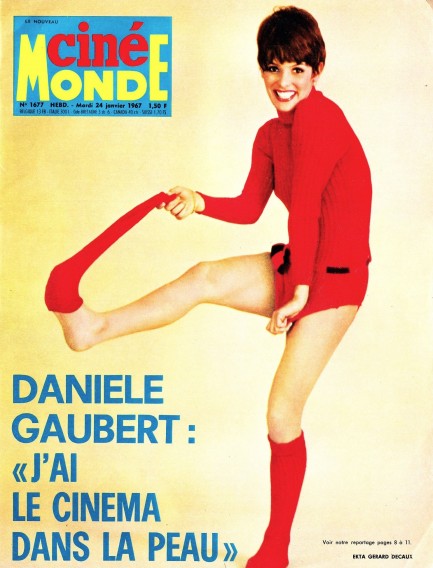
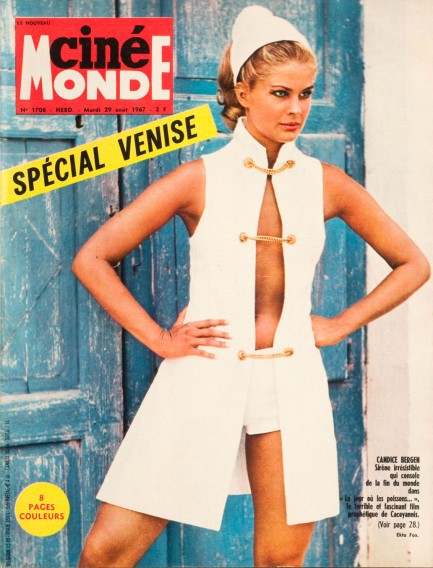
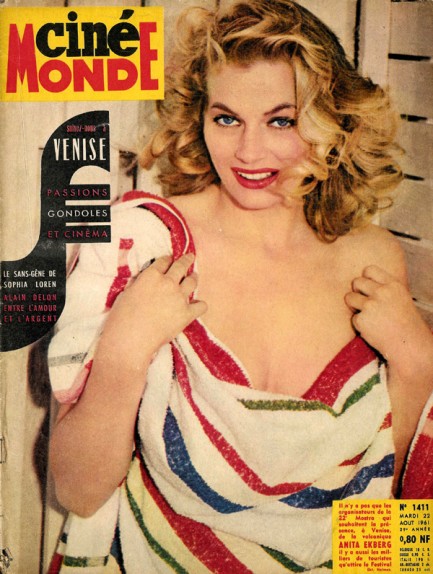
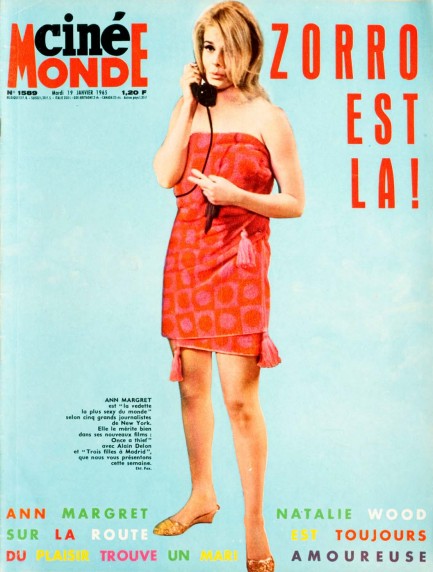
| Femmes Fatales | Apr 13 2016 |

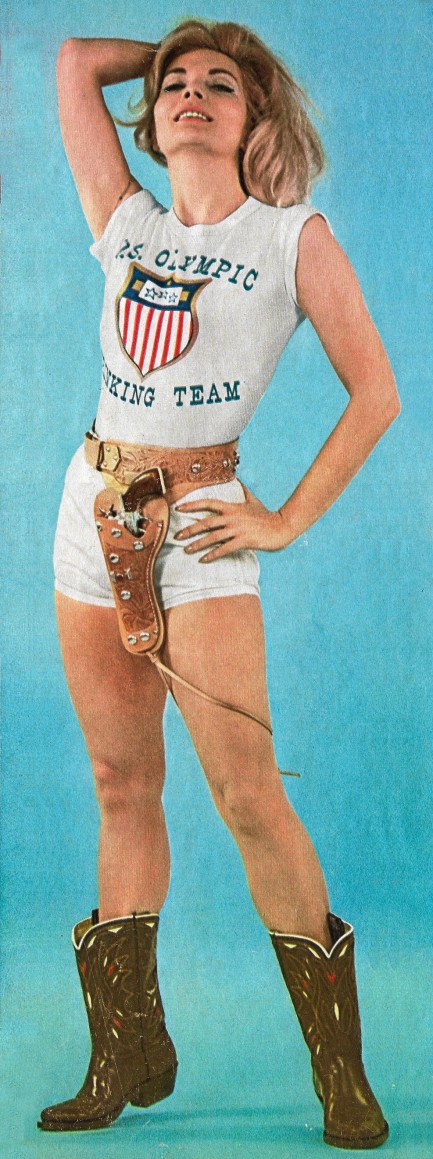
This image of German born French actress Dorothée Blanck appeared on the cover of France's Cinémonde magazine today in 1965. Blanck died in January at the age of 81 after decades in cinema, including roles in Jean-Luc Godard's Une femme est une femme, Jean Renoir's Elena et les hommes, and Jacques Demy's Les parapluies de Cherbourg. She came from the humblest of beginnings—born in prison in Aichach, where her mother was serving time for political crimes like numerous leftists resistant to the rising Nazis; shuttled around to various orphanages and institutions; not even given an official name for the first two years of her life. Her film career began in 1953 and, with occasional lulls, she worked often throughout her life, appearing in some forty films. Her last project, entitled Jours de France, or Days of France, is in post-production and is slated to hit cinemas sometime this year.
| Intl. Notebook | Nov 2 2015 |

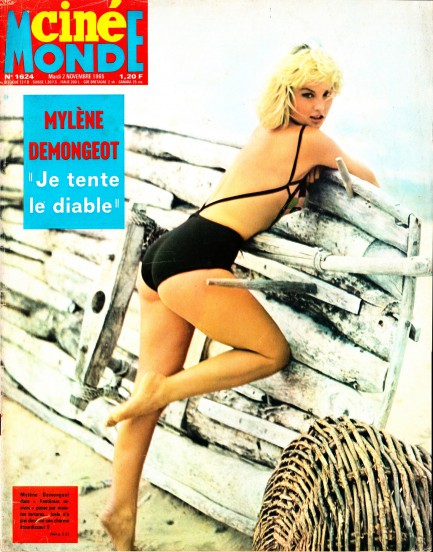
The French weekly Cinémonde debuted in October 1928, with the above issue hitting newsstands today in 1965 starring French goddess Mylène Demongeot on the cover. Inside, her feature is headed with the text “Il faut oser tenter le diable,” which means, “We must dare tempt fate,” and she goes on to say, “Il existe peut-être dix photographes au monde (seulement) à qui, pour nue... ou presque, une actrice puisse faire confiance,” or basically, “There are perhaps ten photographers in the world (only) who… (almost) naked, an actress can trust.” The literal translation reads a bit backward, but you get the drift—she of course means only a few photographers can be trusted to shoot an actress (almost) nude.
One of those is apparently British director Terence Young, who helmed Dr. No and two other Bond movies, as well as Zarak and Wait Until Dark, and whose photography you see here. However Demongeot, after all this philosophizing about the (almost) nude form, does not appear (almost) naked in any of the photos. Still, she looks amazing, as always. She says at the end, “Je voudrais qu'il ait envie de les decouper et de les regarder longuement, avant de se coucher. Pour qu’il fasse de beaux rêves.” Something along the lines of wanting men to cut out her photos and look at them before going to bed… to inspire beautiful dreams. Well, we would have to use a laptop instead of cut out photos, and we’d do it, except we have a feeling our girlfriends would not let us get away with it. Of that we’re (almost) sure. 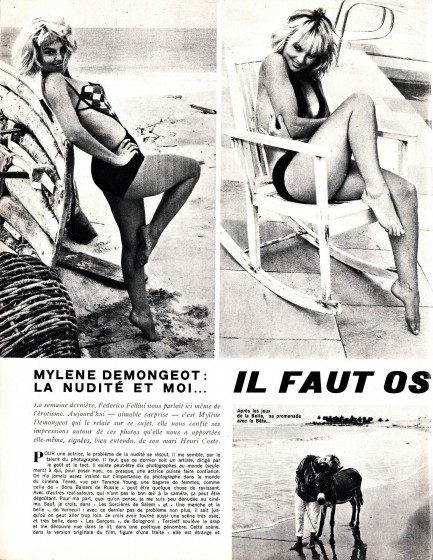
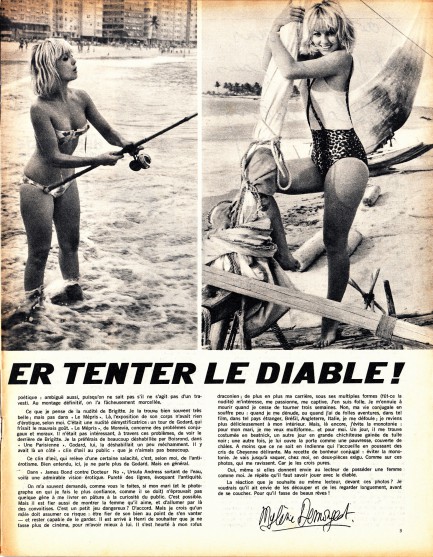
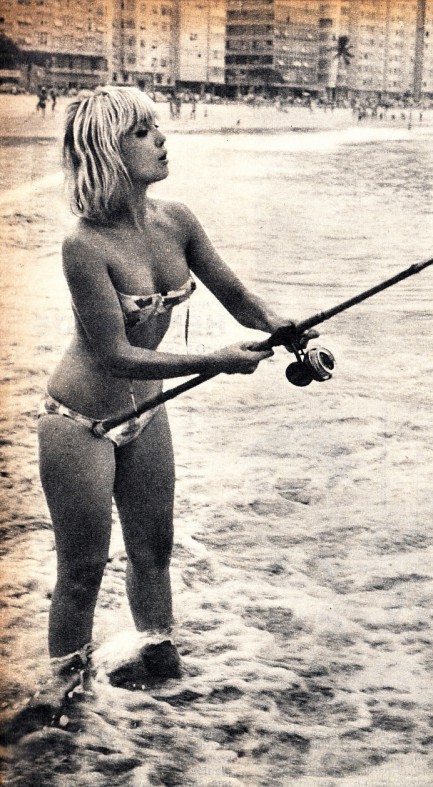
| Femmes Fatales | Nov 16 2014 |

